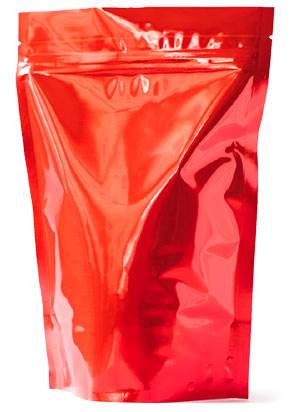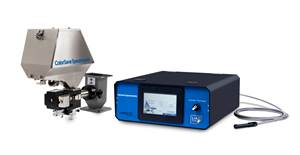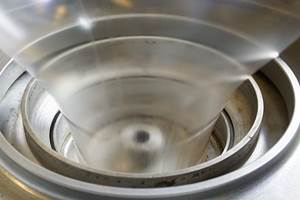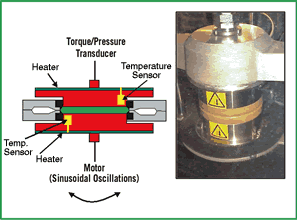NPE 2006 News Wrap-Up: Testing and QC--New Lab Instruments Stress Affordability and Convenience
Thermal and mechanical testers, color and appearance sensors, vision inspection devices and CMMs—the NPE had them all in more compact, economical, and easy-to-use models.
Compact. Repeatable. Easy to use. High throughput. These are among the most common attributes sought by buyers of testing and quality-control instruments. They applied to most of the product introductions in this category at the Chicago NPE show, as did one more welcome advantage: Affordability. Among the new devices claiming these benefits were a non-contact, in-line color-measurement device, an entry-level melt-flow tester, a three-station Vicat heat-distortion tester, and a compact family of color viewing booths with multiple light sources. There were also new hardware and software products for measuring mechanical and thermal properties, vision inspection, coordinate measuring, and fast, non-destructive wall-thickness measuring for molded and extruded products.
Thermal/mechanical tests
A highlight of the show was Dynisco’s Rheometer VTM, a new instrument designed to fully characterize a wide spectrum of thermoplastics in powder, pellet, or sheet form in a single process and in both laboratory and production environments. VTM stands for “viscosity, transition, and modulus,” the three critical phases of polymer measurement, and this instrument can measure dynamic mechanical properties through all of these phases, from melt through transition to solid state.
This instrument is based on a rubber analyzer developed by Alpha Technologies of Akron, Ohio, which Dynisco acquired in late 2004. Known as the APA 2000 Advanced Polymer Analyzer, this is a unique type of oscillating parallel-plate rheometer that has been used to analyze thermosets, composites, and some thermoplastics such as polyolefins (see “Learn More” box).
To better address the testing requirements of a wider range of thermoplastics, Dynisco engineers recently enhanced the VTM with two major modifications. First, they extended the dynamic range of the instrument, which improves its low-end sensitivity because many thermoplastic melts produce low signals due to their lower viscosities. Second, Dynisco designed a new die configuration with a patent-pending groove pattern on the surface that is said to significantly reduce slippage between the plastic and the die. This addresses the high shrinkage that occurs between the melt and solid stages of thermoplastics, and the improved “grip” on the polymer afforded by the die grooves is said to give excellent repeatability in test results.
The $85,000 VTM boasts superior productivity over other dynamic shear rheometers, as it can be queued up to run up to 100 samples with no operator intervention. It reportedly requires minimal sample preparation, and its patented film delivery system is said to virtually eliminate downtime for cleanup.
Tinius Olsen unveiled a three-station HDT (DTUL) and Vicat tester for users with limited budgets and low-volume testing needs. The HDT 306 costs 20% less than the basic configuration of the company’s popular six-station HDT 603, yet it incorporates many of the same features, such as pneumatic raising and lowering of the test station, air-bearing-guided loading rods for friction-free operation, and a built-in specimen basket to catch dislodged specimens.
This machine can be operated from the hand-held terminal or from a PC. Testing is completely automatic, according to the user-defined program. For higher throughput, an optional cooling system can be added.
Also new from Tinius Olsen is an inexpensive, entry-level melt indexer. The MP200 is a basic extrusion plastometer that boasts many of the design characteristics of the popular MP600 but at 20% lower cost.
Instron has developed a new family of electrodynamic test instruments that can perform both static and dynamic testing—from simple tensile to high-frequency fatigue tests—on a variety of plastics, composites, and other materials and components. These instruments are entirely air-cooled and feature a T-slot table for flexible test setups and electrically operated crosshead lifts. Two system capacities are offered: The E1000 has dynamic capacity of ±1000 N (225 lbf) and static capacity of ±710 N (160 lbf). The E3000 has dynamic capacity of ±3000 N (675 lbf) and static capacity of ±2100 N (472 lbf).
Among other NPE introductions were two new instruments from C.W. Brabender. As we reported in August, its MeltFloW @on is the company’s first melt indexer. It can record 50 measuring points with a linear position transducer. The company’s Temperature Scanning Stress Relaxation (TSSR) meter—also a first for Brabender—measures the thermomechanical properties of TPEs, TPOs, and TPVs.
In addition, we reported in May on the eXpert 760X line of modular, economical tabletop “universal” testers from Admet and the HIT5.5P pendulum impact tester from Zwick USA, which can perform Charpy, Izod, tensile impact, and Dynastat tests. Also noted in May were Instron’s Extra Long Travel Extensometer (EXL) for measuring strain to rupture of highly extensible materials and (in June) the same firm’s $17,900 package of mechanical test frame with digital servo control, grips, fixtures, PC controller, and testing software.
As we noted in June, Mecmesin Corp. of the U.K. has a new U.S. direct sales force, which is marketing new MultiTest-x tension and compression test frames with base-mounted LCD control and data display.
Color and appearance
What’s said to be the most affordable noncontact, in-line color-measurement device on the market was unveiled by X-Rite. Designed for use in injection and blow molding and extrusion, VeriColor Spectro is a spectrophotometer that measures “absolute color” on the Lab scale rather than just relative color (color difference versus a standard). Until now, noncontact color measurement has been served on the low end by inexpensive colorimeters capable of distinguishing only gross color differences. The high end has been served by spectrophotometers that measure absolute color but cost well over $60,000 and tend to be too large and complex to integrate on-line.
Enter VeriColor Spectro, priced between $15,000 and $20,000 and about the same size as an overhead projector. It mounts right on the production line and measures the color of every molded part or length of extruded product so that color shifts are noticed immediately.
Meanwhile, HunterLab unveiled the ColorQuest OL spectrophotometer designed specifically for on-line color measurement of clear/translucent film and sheet. The sample passes between sensing and receiving heads. A standard system has a touchscreen display.
Also new from HunterLab is a benchtop spectrophotometer that boasts superior precision in measuring colors of plastics in lab or production environments. UltraScan Pro measures both reflected and transmitted color using diffuse/8° geometry with automatic gloss inclusion or exclusion. Its 5-nm optical resolution is said to permit precise measurement of plastics colorants with sharp cutoff characteristics. Its extended measurement range into the near infrared and near uv is said to permit the measurement of camouflage products and uv-absorbing materials. It also features three sizes of sample-measurement areas and EasyMatch QC software.
Datacolor launched a comprehensive software system for creating and managing color formulations. Datacolor Match Pigment is designed to quickly check millions of pigment combinations against formulation requirements. From one convenient “Formula Central” screen, users can match, correct, and scale up color formulations. They can see formulas in a spreadsheet, view and then change an ingredient amount or formula variable, and see the results instantly without ever having to re-measure, recall, or re-match.
This program’s matching optimizer reportedly lets users customize formulations based on a variety of criteria including color differences for up to five illuminants, metamerism indices, curve fit, contrast ratio, and cost. The program boasts “adaptive colorant management,” which reduces the number of laboratory or production trials by “learning” with each use. It is said to respond intelligently to available data at any stage in the color-development sequence. For example, a user need only measure a target and the system is ready to match or search for similar previous matches. An optional module uses proprietary technology for rapid matching of metallic, pearlescent, and interference colors.
GTI Graphic Technology showcased its MiniMatcher color-inspection systems. These compact viewing booths with multiple light sources are available in three versions with three to five different illumination sources.
Other recently introduced instruments at the show were Byk-Gardner’s Spectro-guide hand-held color and gloss meter and Equitech’s Equispec OCS unit for real-time, on-line color measuring inside an extruder (see “Learn More” box).
News in vision inspection
The new Smash Advanced Surface Inspection System from ISRA Surface Vision reportedly provides superior resolution of defect images in film and sheet at high production speeds. Smash boasts a 60 MHz processing speed—reportedly 50% faster than competitive systems. It is said to provide defect images with unparalleled detail because it displays three times as many pixels as competitive systems, giving users more accurate classification of defects. For example, round holes do not appear flat. Its white LED illumination module reportedly allows for optimum defect detection.
Other introductions in vision inspection include AGR TopWave’s PETWallplus with Vision, a combination of noncontact wall-thickness monitoring and camera-based defect detection for PET containers. And Cognex featured new software for its SmartView web-inspection systems that allows the evaluation of surface qualities such as smoothness, roughness, patterning, and texture, as well as a new remote-head camera version of its In-Sight 5400 vision sensor.
Compact CMM
A fully automatic benchtop coordinate measurement machine (CMM) designed for restricted spaces and/or to measure small parts was featured by Optical Gaging Products. Model 250 is the newest addition to the company’s SmartScope Quest line. Its patented TeleStar zoom lens is said to provide consistent feature sizes anywhere within the field of view at any magnification.
Despite its small footprint, its 300 x 150 x 200 mm stage travel accommodates a wide variety of parts and fixtures. It reportedly can measure automatically parts of any material, texture, opacity, and color. Model 250 uses video, touch probe, laser scanner, or micro-probes to completely characterize a part in a single setup. Since touch probes and lasers excel at measuring surfaces and video excels at measuring edges, a multi-sensor approach provides more complete information about complex parts than any single sensor, says OGP.
Container testing
As we reported in September, the TorqTraQ hand-held device measures the application and removal torque of bottle closures at the bottle filling line. It’s new from Plastic Technologies, Inc. (PTI).
The new MiniTest FH 7000 Series probe from ElectroPhysik is a non-destructive instrument for measuring wall thickness of bottles, containers, molded parts, hoses, and tubes. It boasts better accuracy and reproducibility than previous models with faster scan rates of up to 20 measurements/sec.
Related Content
Additive Masterbatches for Monomaterial PE Film Applications
Ampacet’s Biax4CE portfolio of additives and white color concentrates designed for MDO-PE and BOPE applications.
Read MoreTosaf’s Investments in North America Result in 40% Increase in Production Capacity
Backed by a global presence, Tosaf provides localized additive and color solutions, and services for the plastic industry in North America.
Read MoreColor-Measurement for Extrusion, Molding
System helps processors control the cost of quality due to color variations, using real-time color data for QC analytics and color optimization.
Read MoreReduce Downtime and Scrap in the Blown Film Industry
The blown film sector now benefits from a tailored solution developed by Chem-Trend to preserve integrity of the bubble.
Read MoreRead Next
Novel Rheometer Tells More About Thermoplastic Processing Behavior
A unique type of oscillating-die rheometer, first unveiled in 1999 for analyzing thermosets and composites, has now been upgraded for testing polyolefins and other thermoplastics.
Read MoreIn-Mold Labeling Catching on in North America
Already a familiar sight on European store shelves, the eye-catching appeal of "IML" is gaining traction among North American injection molders. The latest tooling and automation designs can handle the higher volumes needed here.
Read More

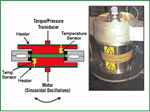
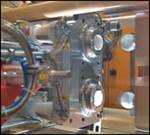
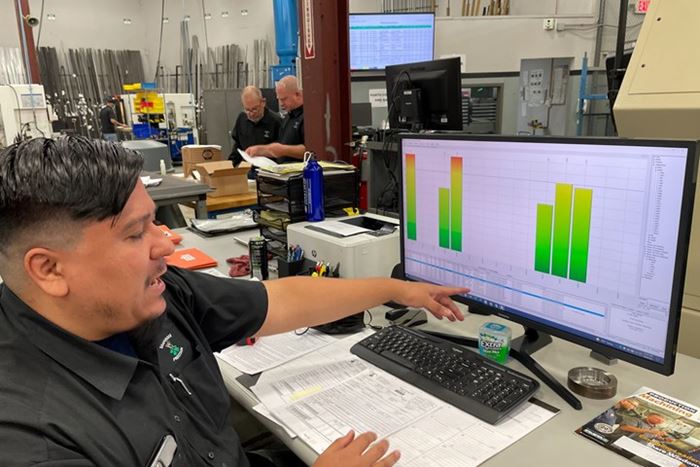

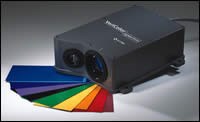





.png;maxWidth=300;quality=90)






 (2).jpg;maxWidth=300;quality=90)






